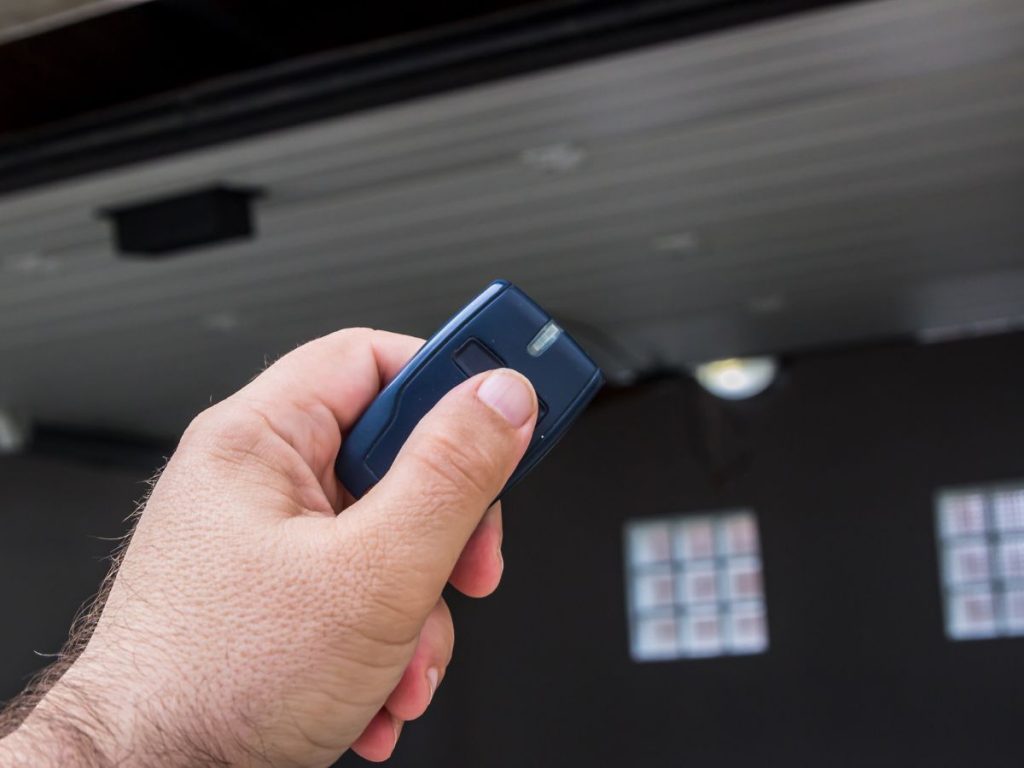Welcome to our comprehensive guide on choosing the right garage door spring for your needs. Garage door springs are crucial in adequately functioning your garage door, ensuring its safe and efficient operation. Understanding the different types of garage door springs, how they work, and how to choose the right one for your door can save you time, money, and potential headaches.
Understanding the Functionality of Garage Door Springs
Before we delve into the types of garage door springs, it’s important to understand the overall functionality of these essential components. Garage door springs serve the critical purpose of bearing the door’s weight, enabling smooth movement. They work in conjunction with the garage door system, allowing the door to open and close effectively, whether manually or with the help of a garage door opener. The springs counterbalance the door’s weight, making it easier to operate and ensuring it closes securely.
The Role of Garage Door Springs
Garage door springs have a significant role in your garage door’s overall operation and safety. As mentioned earlier, they bear the weight of the door, which is substantial, depending on the size and type of the door. By effectively counterbalancing the weight, the springs make it possible for the door to open and close with ease, whether manually or with the assistance of a garage door opener.
To enhance safety, it is recommended to have safety cables installed alongside extension springs. Safety cables are essential for preventing spring-related accidents. In the event of a spring breaking, the safety cable will prevent the spring from flying across the garage, reducing the risk of injury or property damage.
Additionally, understanding the overall length of the spring is essential for safety reasons, as springs that are too short or don’t match the height of the door can lead to unbalanced operation and potential hazards.
How Garage Door Springs Work
Now that we’ve established the role of garage door springs, let’s take a closer look at how they work. Garage door springs are an integral part of the garage door system and are responsible for the door’s opening and closing movements.
There are two main types of garage door springs: torsion springs and extension springs. Torsion springs are typically found above the garage door, while extension springs are positioned on either side, parallel to the door tracks.
Types of Garage Door Springs You Should Know
Now that we understand the functionality of garage door springs let’s explore the different types of springs available for residential garage doors. The two main types of garage door springs used are torsion springs and extension springs. By understanding the characteristics and application of each type, you can make an informed decision about which spring system is best suited for your garage door.
Detailed Overview of Torsion Springs
Torsion springs wind either clockwise or anticlockwise, utilizing metal rods to store mechanical energy. The winding cone effectively secures the end of the spring, which comes in various wire sizes and overall lengths. Operating on the principle of rotational force, torsion springs are integral components of a garage door system, providing the necessary force for lifting and lowering the door.
Comprehensive Look at Extension Springs
Extension springs extend and retract along the garage door tracks, with stationary cones securing their ends. During extension spring movement, the bottom rollers bear the door’s weight. The overall length of the extension springs determines the door height supported. Ensuring the correct spring color coding is crucial to identifying the right spring type.
The Process of Choosing the Right Garage Door Spring
Assess the weight of your garage door to identify the required spring type—measure using a tape measure for accuracy. Determine the type of spring needed – either torsion springs or extension springs. Consider hiring a professional for installation.
The average cost of a new spring varies based on the garage door’s weight and industry standards. The correct spring ensures smooth functioning, while the wrong one can damage the garage door opener. Make an informed decision based on a comprehensive guide. Good news: professional assistance guarantees the correct choice.
Assessing the Weight of Your Garage Door
To determine the correct spring type, weigh your garage door and consider using a pair of springs for heavy residential doors. The overall weight of the door is a crucial factor impacting the type of spring needed. Accurately measure the door’s height using a tape measure to ensure the right spring type is selected based on the door’s weight.
Identifying the Required Type of Spring for Your Garage Door
Different garage door types require specific types of springs to operate effectively. The appropriate spring type is determined by the weight and type of the garage door, making it crucial for safety and smooth functionality. Torsional springs and extension springs are the primary options, with the choice depending on the specific door type. It’s advisable to seek professional assistance in identifying the correct spring type for your garage door to ensure optimal performance and safety.
Insight into the Garage Door Spring Color Coding System
Decoding a color-coding system for garage door springs is essential. The right color indicates the correct spring for your garage door. Understanding the color codes while choosing a new spring is crucial. The color code represents the weight and size of the spring. The color coding system also ensures that the correct spring is chosen for the garage door, preventing any safety hazards. Understanding this color system is vital for proper garage door maintenance.
Decoding the Color Coding System
It is crucial to understand the various types and their functions when selecting a garage door spring. Choosing the right spring that matches your garage door specifications is essential. The color coding system plays a vital role in identifying the correct spring for your door, considering weight, size, and cycle life. Consulting with a professional ensures optimal safety and performance.
Importance of the Color Coding System in Selection
When selecting a garage door spring, the color coding system is crucial. Each color corresponds to a specific weight range, ensuring you choose the correct spring for your door. Selecting the wrong spring can lead to safety hazards and damage to your door. Consulting with a professional ensures the correct spring selection, avoiding potential issues.

Guidelines for Choosing Torsion Springs for a Garage Door
When choosing torsion springs for your garage door, consider factors such as wire size, inside diameter, overall length, and wind direction. Use a tape measure to determine these specifications and ensure the right or left wind based on the garage door opener.
Additionally, familiarize yourself with the average cost of torsion springs in the garage door industry to make an informed decision. This comprehensive guide will help you avoid the wrong spring and ensure a new spring that suits your garage door perfectly.
Determining the Wire Size
Determining the wire size is crucial for optimal functionality when replacing a garage door spring. Understanding the differences between torsion and extension springs is essential before taking measurements. To determine the appropriate replacement size, carefully measure the length of the current spring using a tape measure. Factors such as the garage door’s weight and the wind’s direction also play a crucial role in determining the wire size. Due to safety reasons, it’s essential to consider hiring a professional to replace the old spring with a new one.
Measuring the Inside Diameter and Overall Length
When determining the type of spring needed for your garage door, accurately measuring the inside diameter and overall length is essential. Measure the inside diameter by finding the distance across the center of the spring, and then measure the overall length from end to end, including the coils. Choosing a spring with the same inside diameter and overall length is as crucial as your current one. If you have specific garage door needs or need clarification on the measurements, consulting with a professional in the garage door industry is advisable.
Understanding the Direction of Wind
When selecting garage door springs, it’s crucial to understand the wind direction. This is because garage door torsion springs are wound in either a right-wind or left-wind direction, depending on the type of spring and the manufacturer’s specifications. To measure the wind direction, use a tape measure and assess the coil’s overall length and inside diameter. Choosing the wrong wind direction can lead to serious safety hazards and may affect the functionality of the garage door opener. Hiring a professional for installation ensures the correct wind direction and a comprehensive guide on the proper selection.
Recommendations for Selecting Garage Door Extension Springs
When selecting garage door extension springs, it’s crucial to consider the garage door weight and the ends of the springs. Remember to use a tape measure to get accurate measurements. Additionally, determine the spring’s right or left wind and the clockwise direction for installation.
Consider factors such as the average cost and the comprehensive guide provided by the garage door industry. Choosing the wrong spring can be costly, so follow a comprehensive guide to avoid unnecessary expenses.
Tips to Choose the Right Extension Springs
When choosing extension springs for your garage door, measuring the door’s height and weight is crucial to determine the correct spring size. Additionally, consider whether a single or double extension spring is needed and ensure the chosen spring has the appropriate wire size and diameter. It’s also important to factor in the spring cycle life to guarantee longevity. If you need more time, consult a professional garage door technician to select correctly.
Factors to Consider when Opting for Extension Springs
Several crucial factors should be considered when opting for extension springs. Matching the garage door’s weight and size ensures the right balance and tension. Additionally, the number of springs needed should align with the door’s weight and the available space.
Choosing extension springs with the appropriate length and stretch is essential for optimal functionality. Prioritizing high-quality, durable materials, such as oil-tempered steel, can significantly impact long-term performance. Lastly, professional installation is imperative for safety and overall spring performance.
Cost of Materials
The materials required for garage door spring replacement vary depending on the type of spring and the door’s size, leading to fluctuating costs. It’s crucial to consider the specific materials needed for each type of garage door spring to make an informed purchase. Additional components may be necessary for specific springs, impacting the overall material cost for replacement. Understanding these costs is essential for effective budget planning.
Labor Charges
The labor charges for garage door spring installation vary based on the job’s complexity and the spring type. Professional installation involves varying labor charges, depending on the service provider. The labor cost for spring replacement includes factors such as the type of spring, door size, and additional maintenance. Transparent information about labor charges is crucial when hiring professionals for installation or replacement. Understanding the breakdown of labor charges assists in comparing quotes from different providers.





